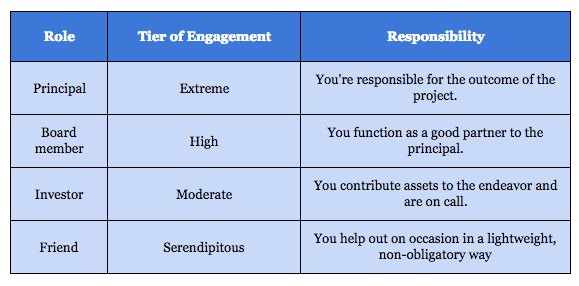Haute 100: Reid Hoffman Shares His Four Tiers of Engagement
Over the weekend, Haute 100 lister Reid Hoffman published a blog post via LinkedIn sharing what Silicon Valley has taught him. Hoffman, who is a co-founder and executive chairman of LinkedIn and a partner at Greylock, shared his four pro tips for engagement.
Hoffman wrote, “Recently I was talking with the noted surgeon, writer, and public health researcher Atul Gawande about his demanding schedule – and how he tries to manage it for maximum impact. As I described the framework I use to navigate Silicon Valley and all its potential deals and alliances, Atul suggested my approach could help any busy professional trying to prioritize her obligations, not just Silicon Valley types. So I’m sharing it here.”
Specifically, Hoffman shared his framework for maximizing collaborative opportunities in a time-crunched world. The Silicon Valley heavy hitter four tiers of potential engagement is as follows:
The 48-year-old venture capitalist breaks down each tier throughout his blog post. Here are some highlights:
On the role of a principal
When you commit to functioning as a principal, you essentially say, “I own this, and it’s my responsibility to bring this endeavor to fruition.” You’re involved on a daily basis. You may have contributed your own assets. You probably have or at least are in the process of recruiting and thus managing employees. You’re responsible for the active management of whatever resources define the entity or project.
Being a principal, in short, is a serious commitment. You deal with all the significant issues that arise, and ultimately you determine the overall path and outcome of the endeavor. If it succeeds, you bask in the glory. If it fails, you own the failure.
On the role of a board member
As a board member, you engage in a substantive but less immersive fashion than you do as a principal. You’ve committed to providing ongoing strategic governance and assistance to the endeavor. But while your mandate is to help manage resources intelligently, you’re not directly responsible for the project’s outcome in the way that a principal is.
As a key strategic partner to the endeavor’s principal or principals, you must maintain an ongoing picture of the endeavor’s strengths, weaknesses, opportunities, and threats – i.e., what’s commonly known as a SWOT analysis.
To read all of Hoffman’s pro tips, click here.














